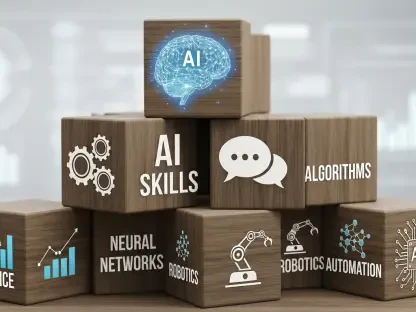The expansion of human language technology has led to many open-source NLP tools, essential for everything from chatbots to analytics. These tools are celebrated for their adaptability, cost-effectiveness, and strong community backing. For developers diving into NLP, selecting the right tool is crucial, as it significantly impacts their project outcomes. This overview aims to guide those eager to utilize open-source NLP tools effectively.
Critical Factors in NLP Tool Selection
Choosing the most suitable NLP tool requires careful consideration of multiple factors, with project requirements steering the decision-making process. Variables such as the nature of the task, the volume of data, expected performance, ease of use, and the presence of a supportive community play critical roles. The breadth and quality of documentation cannot be overstated; it can demystify complex NLP concepts and accelerate development. When evaluating tools, developers must weigh these elements against their project’s specific needs to identify the most apt solution.Performance metrics often act as the litmus test for tool selection, and thus developers must be astute in analyzing whether a tool’s benchmarking aligns with their aspirations. Ease of use is equally important; a steep learning curve can impede progress, while an intuitive interface can catalyze development. Lastly, active community support can provide valuable assistance, from troubleshooting to collaborative enhancement of the tool.
Examining Popular Open-Source NLP Tools
An array of open-source NLP tools exists, each with distinct flair. spaCy stands out for its fast and industrious processing, arming developers with pre-trained models for real-time applications. NLTK, with its inventory of algorithms and language data, shines in academic and research endeavors. TextBlob offers simplicity and a gentle learning curve, making it ideal for quick prototyping and beginner-friendly projects. Gensim excels in analyzing document similarity and uncovering latent semantic patterns, proving to be invaluable for tasks involving extensive corpora.Comparing these tools highlights the importance of context; spaCy’s agility is well-suited for high-throughput environments, whereas NLTK provides broader linguistic coverage that researchers and educators find indispensable. TextBlob’s user-centered design assists those prioritizing ease over complex functionality, and Gensim’s specialized algorithms are tailored for topic discovery and similarity calculations.
Deep Dive into Specialized NLP Functionalities
Delving into specialized functions of NLP, tools such as Stanford CoreNLP and AllenNLP emerge with robust capabilities for comprehensive linguistic analysis. Stanford CoreNLP excels in tasks ranging from sentiment analysis to coreference resolution, and AllenNLP brings cutting-edge deep learning to the forefront. Moreover, sentiment analysis, a vital commercial tool, is effectively handled by TextBlob and VADER sentiment within the NLTK suite, each offering nuanced emotional interpretation of text.Entities in text—names of people, locations, organizations—can be accurately extracted using the named entity recognition of spaCy or Stanford CoreNLP, both bringing precision and efficiency to the task. When it comes to translation, open-source tools like OpenNMT provide powerful models that democratize language conversion, facilitating global communication.
Case Studies and Real-World Applications
Case studies showcase the transformative impact of open-source NLP tools. Apache OpenNLP has been integral in developing conversational agents within customer service, parsing immense volumes of queries to glean customer intent. Gensim’s topic modeling capabilities have been employed in the media industry to classify and recommend articles, elevating content relevance and engagement. These instances underline the versatility and real-world efficacy of open-source NLP tools, cementing their role across various sectors.By solving practical problems, from sentiment analysis in social media monitoring to enhancing search algorithms with entity recognition, these tools demonstrate their adaptability and value in production environments. They have powered applications in finance, healthcare, education, and beyond, revealing the profound reach of NLP technology.
Ensuring Efficient Implementation and Integration
Strategic integration of NLP tools into existing systems can enhance their value, but it requires careful planning and execution. Developers need to ensure that the chosen NLP tool aligns with the technology stack in use and can scale with growing data demands. For instance, spaCy’s industrial-grade capabilities may serve enterprise-level applications, while TextBlob’s simplicity suits smaller-scale projects.In production, the maintainability of NLP applications is paramount. Open-source NLP tools should not only be scalable but also manageable over time, with updates and community feedback playing a pivotal role in their evolution. The ability to implement changes efficiently, without disrupting service, is crucial in maintaining robust NLP-enabled systems.
Addressing Challenges in Open-Source NLP
While open-source natural language processing (NLP) tools unlock significant potential, they also come with their set of complexities, such as demanding learning curves and intricate integration processes. To effectively utilize these tools, developers can dive into the tools’ robust communities for support and guidance. Engaging in online discussions, enhancing documentation, and finding mentors are practical approaches to mitigating these challenges.Pursuing formal professional growth through targeted workshops and online tutorials can also be invaluable in mastering these NLP resources. Additionally, developers must address compatibility issues, which are paramount in system design. Many NLP tools offer features that promote interoperability, which can be extremely helpful. By strategically approaching these challenges and capitalizing on community support and educational resources, developers can adeptly navigate the world of open-source NLP tools.
Embracing Innovation and Collaboration in NLP
The open-source model thrives on collaborative innovation. Developers are encouraged to actively participate in the NLP community, contributing code, reporting bugs, and sharing ideas. This collaborative spirit not only strengthens the tools but also fosters a culture of shared knowledge and advancement within the field of NLP. Engaging with the community is more than just a means to improve current tools; it’s also an avenue through which new concepts are tested and refined. The collective wisdom of the community can guide developers through evolving landscapes, ensuring continued growth and adaptability within the realm of NLP.
Making the Choice: Factors to Consider
When selecting the right tool for a project, a thorough match between the project’s demands and the tool’s functions is imperative. During this critical choice, developers need to take into account the project’s scale and how intricate the involved tasks are, as well as their distinct nature. It’s not sufficient to rely solely on theoretical evaluations when it comes to tool selection; hands-on trials with different options can offer unique practical insights. Practical experimentation with tools can highlight which one seamlessly integrates with the project’s requirements, thus ensuring efficiency and success. This blend of theoretical foresight and practical trials is the bedrock of a meticulous selection process that can greatly influence a project’s trajectory. Consequently, developers should prioritize this alignment while not underestimating the benefits of experimental usage to discover the tool that truly satisfies the project’s needs.
Looking Ahead: The Future of Open-Source NLP
As NLP evolves, we can expect open-source tools to progress in tandem with AI and machine learning advancements. Developers must keep an eye on emerging trends such as transfer learning and the fine-tuning of language models—these are on track to be game-changers in NLP. The expansion of the ecosystem will invite new tools that provide developers with more options to innovate in human language technology. This growth signifies a bright future for NLP applications and promises to push the boundaries of what can be achieved with language AI. Consequently, developers should continue to monitor the landscape for new NLP breakthroughs and adopt these state-of-the-art methods to propel their applications to new heights. An enriched toolkit will undeniably aid in crafting powerful NLP solutions, showcasing the dynamic interplay between emerging AI techniques and the domain of natural language processing.









